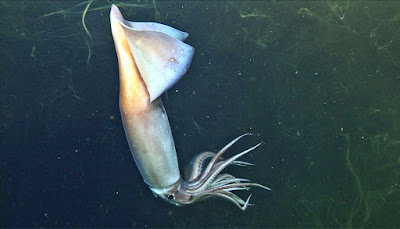SQUID MAY USE LIGHT-UP ORGANS TO ‘TALK’ IN DARK OCEANS
Squid may use aesthetic interaction to coordinate in the close to darkness 0f the deep sea, scientists record.
In the frigid waters 1,500 feet listed below the surface of the Pacific Sea, numerous human-sized Humboldt squid feed upon a spot of finger-length light fish. Zipping previous each various other, the killers move with remarkable accuracy, never ever clashing or contending for victim.
Such as the illuminated words on an electronic book reader, the scientists recommend that the squid's ability to discreetly glow—using light-producing body organs in their muscles—can produce a backlight for moving coloring patterns on their skin. The animals may be using these changing patterns to indicate each other.
togel online uang tambahan bisa anda dapatkan
"…WHO KNOWS WHAT KIND OF INFORMATION THEY'RE SAYING AND WHAT KIND OF DECISIONS THEY'RE MAKING BASED ON THAT INFORMATION?"
"Many squid live in relatively superficial sprinkle and do not have these light-producing body organs, so it is feasible this is a key transformative development for having the ability to occupy the open up sea," says lead writer Benjamin Burford, a finish trainee in biology at Stanford College.
"Perhaps they need this ability to radiance and display these coloring patterns to facilitate team habits in purchase to survive out there."
DEEP SEA SQUID COMMUNICATION
Humboldt squid habits is nearly difficult to study in bondage, so scientists must satisfy them where they live. For this research, elderly writer Bruce Robison of MBARI caught video video of Humboldt squid off the coast of California using from another location operated vehicles (ROVs), or unmanned, robotic submarines.
While the ROVs could record the squid's skin patterning, the lights the video cams required were too bright to record their refined radiance, so the scientists could not test their backlighting hypothesis straight. Rather, they found sustaining proof for it in their anatomical studies of caught squid.
Using the ROV video video, the scientists evaluated how individual squid behaved when they were feeding versus when they weren't. They also took note of how these habits changed depending upon the variety of various other squid in the immediate area—after all, individuals communicate in a different way if they are talking with friends versus a large target market.
The video video verified that squid's coloring patterns do appear to associate with specific contexts. Some patterns were detailed enough to suggest that the squid may be interacting precise messages—such as "that fish over there's mine." There was also proof that their habits could be broken down right into unique units that the squid recombine to form various messages, such as letters in the alphabet. Still, the scientists highlight that it's prematurely in conclusion whether the squid interactions make up a human-like language.



